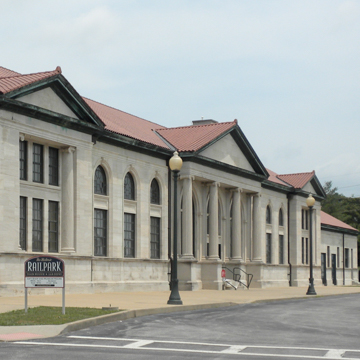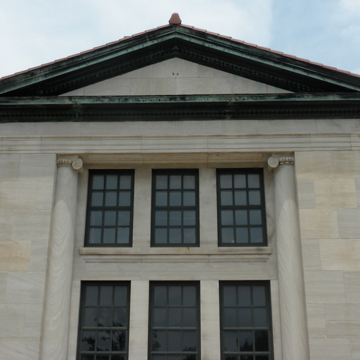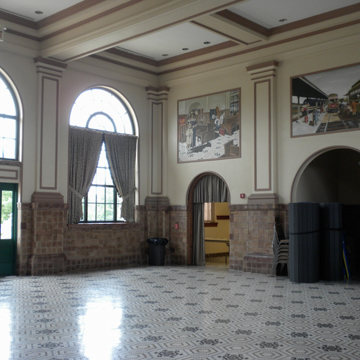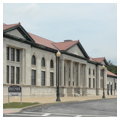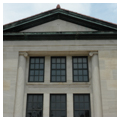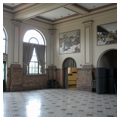You are here
Historic Railpark and Train Museum
Union Station at Bowling Green was built only after the retirement of Louisville and Nashville Railroad (L&N) president Milton Hannibal Smith, who had vowed to let the old station rot in retribution for the city having attempted to bring in a competing railroad company. The Beaux-Arts station was finally built in 1925 and survives today as the Historic Railpark and Train Museum.
When the L&N set about building its main line in 1858–1859, it planned to run the line through Glasgow, several miles east of Bowling Green to Gallatin, Tennessee. The City of Bowling Green began to court a competing rail company, at which point the L&N conceded defeat and built its main line through town. During the Civil War, Confederate colonel John Hunt Morgan and his cavalry (Morgan’s Raiders) proceeded to burn the Bowling Green station, destroy railroad trestles, and blow up an important railroad tunnel near Bowling Green. The wooden railroad station built during the war continued to be used until the new station was erected in 1925.
The Beaux-Arts Union Station is crafted entirely of Bowling Green limestone from the nearby White Stone quarry, which bleaches to a pale hue after it is cut. The facade is divided into five bays with a projecting pedimented center pavilion that features four freestanding fluted Ionic columns; the end pavilions have inset but halved Ionic columns. Copper elements nicely frame each pediment and a red tile roof caps the structure. Windows in three center bays are arched, while those of the outer bays are rectangular.
The main waiting room is an ample cube divided into three bays by pilasters set above brown-tiled wainscoting. Like the rest of the interior, the geometric-patterned floor tiles have been beautifully restored. The less substantially decorated former “Colored Waiting Room” at the rear of the station is now a gallery in the Historic Railpark and Train Museum. The station’s architect is unknown and the L&N files at the Filson Historical Society do not include any drawings of this particular project.
At its zenith in the 1940s, more than thirty passenger trains and many more freight trains passed through Union Station at Bowling Green on a daily basis, but, like all train travel, its numbers decreased significantly from the late 1950s onwards. The last passenger train left the station in 1979. Mike Clark of Bowling Green purchased the station and its surrounding land in 1990 and then sold it to the City of Bowling Green in 1993. The Federal Transportation Enhancement Depot Development Authority funded the station’s restoration. Managed by the Friends of the L&N, the Historic Railpark and Train Museum opened in 2007 with displays inside the museum and historic train cars outside.
References
Klein, Maury. History of the Louisville and Nashville Railroad. Lexington: Kentucky University Press, 2003.
Writing Credits
If SAH Archipedia has been useful to you, please consider supporting it.
SAH Archipedia tells the story of the United States through its buildings, landscapes, and cities. This freely available resource empowers the public with authoritative knowledge that deepens their understanding and appreciation of the built environment. But the Society of Architectural Historians, which created SAH Archipedia with University of Virginia Press, needs your support to maintain the high-caliber research, writing, photography, cartography, editing, design, and programming that make SAH Archipedia a trusted online resource available to all who value the history of place, heritage tourism, and learning.














